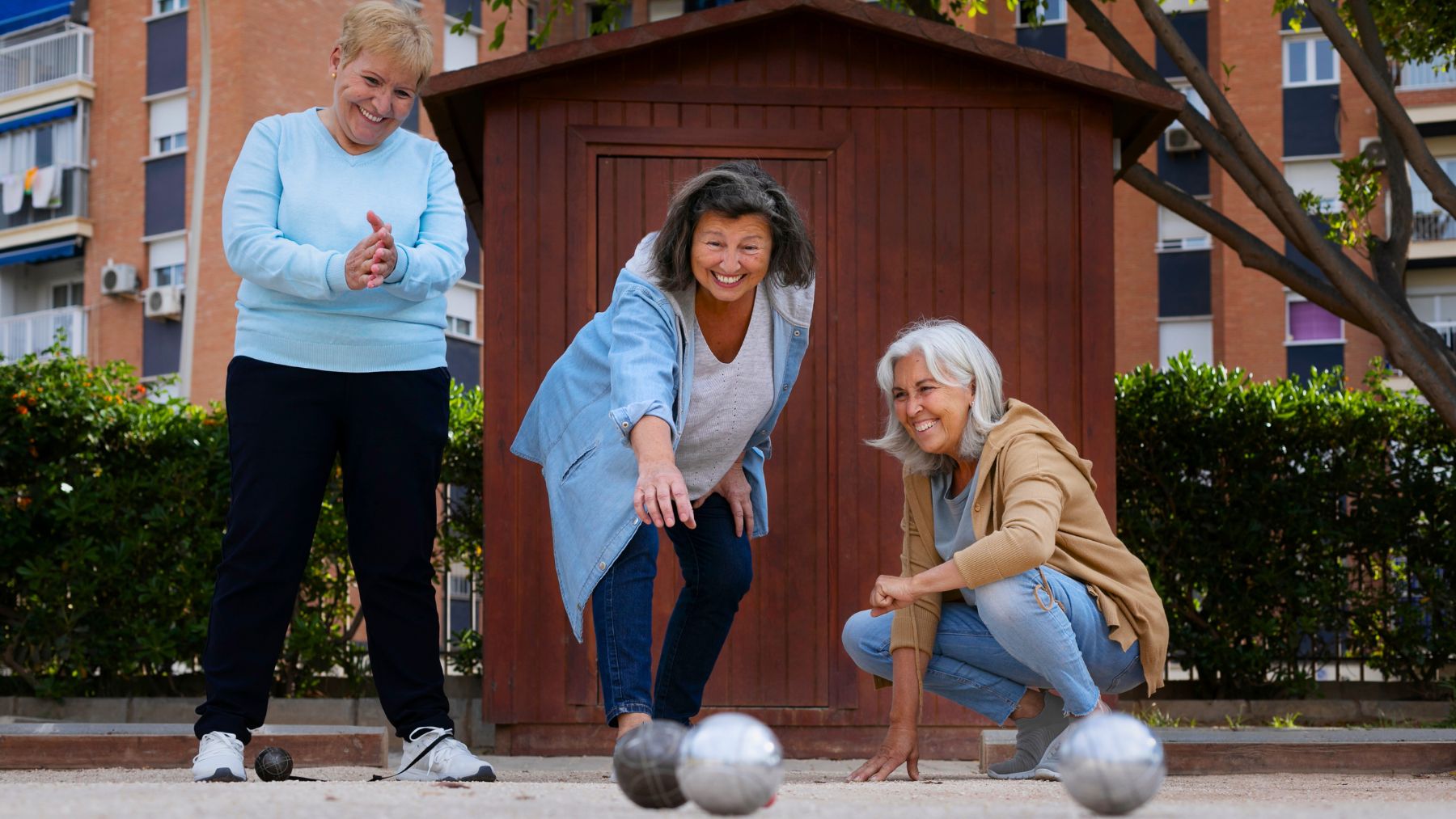You don’t need a gym membership or a complicated workout plan to stay active in retirement. One popular activity offers physical benefits, social connection, and a low-impact way to stay moving—and most people don’t think of it as exercise at all.
That activity is bowling. It’s accessible, enjoyable, and effective. In the following sections, we’ll break down the physical and mental benefits of bowling for adults over 65, plus some tips to get started and make the most of it.
Why bowling is a smart exercise for retirees
Bowling works more of your body than you might expect. A standard three-game series adds up to walking over half a mile, all while swinging an 8- to 16-pound ball. That means you’re getting cardio, balance, coordination, and strength training in a single session, without high-impact stress on your joints.
Because it’s weight-bearing, bowling can also help maintain bone density, which is especially important for older adults looking to reduce the risk of osteoporosis. Each movement engages key muscle groups in the legs, core, and upper body, helping maintain flexibility and functional strength.
The motion of bowling—walking, bending, lifting, turning—supports mobility without overexertion. It’s a great way to stay physically active while avoiding the strain that often comes with traditional exercise. Plus, the rhythm of the game encourages pacing and focus, helping with hand-eye coordination and stability over time.
Bowling also delivers something that treadmills and resistance bands can’t: consistent social interaction. Whether it’s casual games with friends or joining a senior league, the social aspect of bowling helps combat loneliness and gives you a reason to get out regularly. Staying active is easier when it’s something you enjoy.
How to get started with bowling after 65
If you’re new to bowling or haven’t played in years, here are a few ways to ease into it and make the experience more enjoyable and sustainable:
- Start with a lightweight ball. Choose a ball that feels comfortable and easy to control. Many alleys offer lighter options suited for seniors, usually between 6 to 10 pounds. This reduces strain on the shoulders and wrists.
- Wear the right shoes. Bowling shoes provide the grip and support needed to move safely on slick surfaces. If you’re worried about balance, ask the alley staff for shoes with more stability or grip.
- Stretch before you play. Light stretching helps warm up your joints and muscles. Focus on your shoulders, back, and legs to avoid stiffness or discomfort later.
- Go with friends or family. Bowling with others keeps things fun and motivating. It also gives you a chance to build social ties, which can be just as valuable as the physical activity.
- Join a league or group. Many bowling centers have senior leagues or weekly meetups. These are great for keeping a routine and meeting people in a similar stage of life.
- Listen to your body. Take breaks when needed, and don’t worry about your score. The goal is to stay active, not to compete.
Bowling is simple, low-pressure, and effective for keeping your body and mind in shape. You don’t have to train like an athlete to stay energized and flexible. Sometimes, the best kind of exercise is the one that feels more like fun than work.

